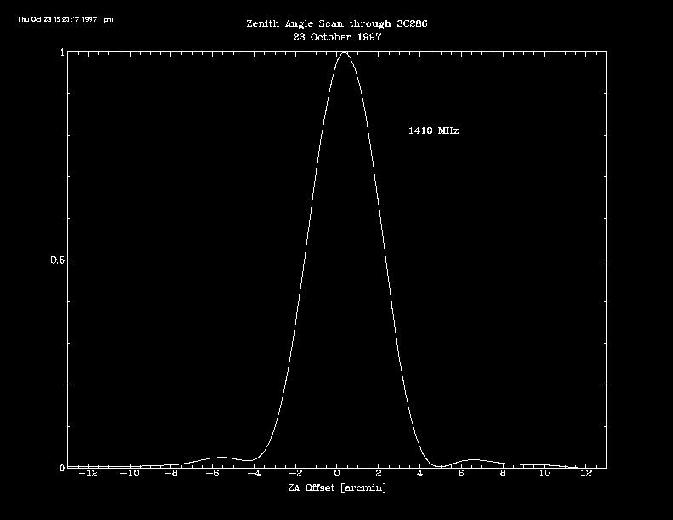NAIC/AO Newsletter, November 1997

We have not yet made definitive measurements of the telescope's sensitivity at L-band. However, initial measurements give 10ħħ1 K/Jy, close to the design value of 11 K/Jy. The height of the suspended structure is only approximately correct and varies with temperature as the tie down cables are not being actively tensioned. The gain also varies systematically up to 20% with zenith angle, possibly because we are currently relying on platform tilt under the weight of the dome to keep the system in focus. This variation can be tuned out by adjusting the tertiary reflector or the position of the carriage house as the dome tracks through its zenith angle range.

A few initial test observations have been carried out to check system performance. Figure 2 shows an observation at 1420 MHz of the first millisecond pulsar, PSR 1937+21. The integration time was 120 seconds. Figure 3 shows the first HI spectrum of a galaxy, UGC1033. On October 15 the 2380 MHz planetary radar system was partially tested by transmitting to Titan with the reflected signal being received by the NASA/JPL Goldstone 70m antenna. The transmitted power was 800 kW. At a round trip time of 2 hours 20 minutes only a very weak echo was expected at best, and none was detected on this first attempt.

There had been considerable activity leading up to the lowering of the platform and the beginning of commissioning. During July and August the Observatory's maintenance department aligned the telescope's elevation rails and rack gear to a best fit smooth curve. At some future date some additional alignment work may be needed to bring the rails to a precise radius of curvature. In September the drive system contractor returned to the observatory to complete the commissioning of the dome, carriage house and azimuth drive systems. This visit resolved the outstanding problems with the system and it now meets all its specifications. During September and early October, NAIC electronics and computer staff completed work on the tie down control system, and the Observatory's maintenance department aligned the tie down masts and booms and properly tensioned all the cables.
We currently have receiver systems installed in the dome at 430 MHz, 1400 MHz and 5 GHz. During the early stages of the telescope's commissioning, pointing and sensitivity tests will be carried out for these systems as well as for the 430 MHz line feed system on the carriage house. A wide band, 1.1 to 1.7 GHz, L-band receiver will be installed in the dome in the near future.